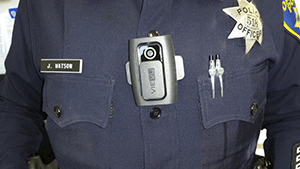
It seems like every time one looks at the news these days, there are disturbing videos of community-police interactions. On every channel, pundits weigh in on the legality of these interactions and the impact they have on society. Although police departments have been recording video for decades via in-car video cameras, the explosion of community member–recorded interactions has changed the discussion about law enforcement in recent years. The proliferation of body-worn cameras is adding even more video to the field, and video undoubtedly plays a key role in U.S. policing initiatives. Generally, the video has been viewed as an important accountability measure, but the footage can also be used to proactively identify good policing practices or de-escalation strategies. It is vital to provide timely feedback for performance improvement and reinforcement of positive practices.
At a recent White House Police Data Initiative (PDI) meeting, the use of body-worn camera technology was a central topic. The PDI was created to further the goals of the President’s Task Force on 21st Century Policing. The PDI was formed as a partnership of cities and private organizations across the United States to focus on two commitment areas: (1) using open data to build transparency and increase community trust and (2) increasing internal accountability and effective data analysis. Body-worn cameras are germane to both areas of focus.1 The discussion provided here began in a break-out session during the PDI meeting, and it is hoped that it will spur further thoughts about ways to make the best use of body-worn camera technology.


